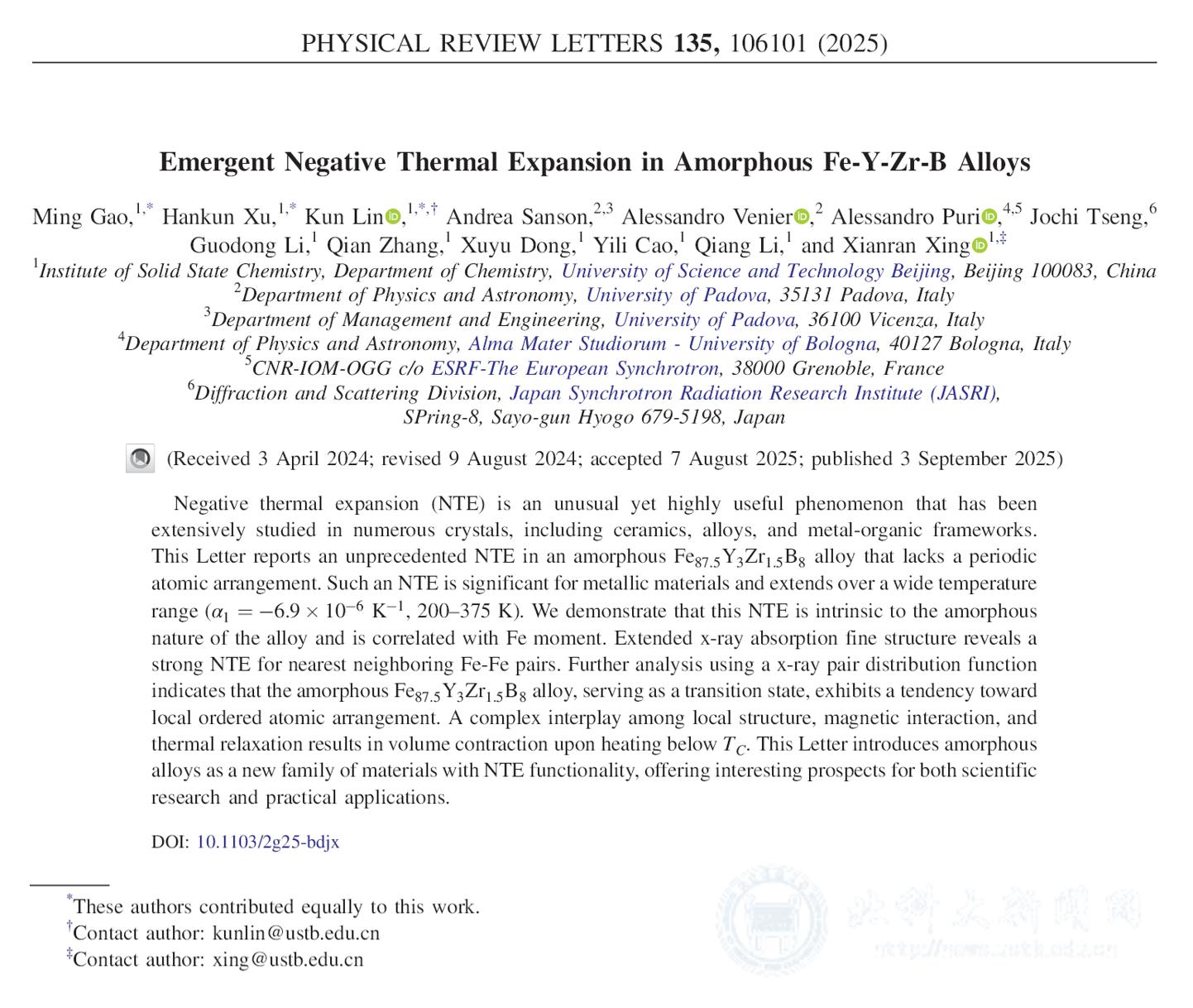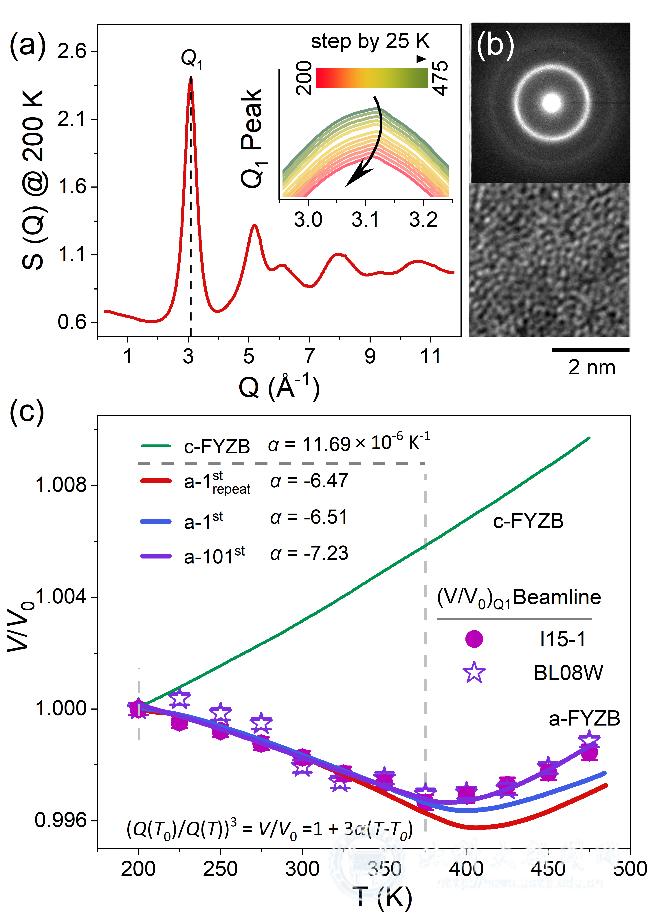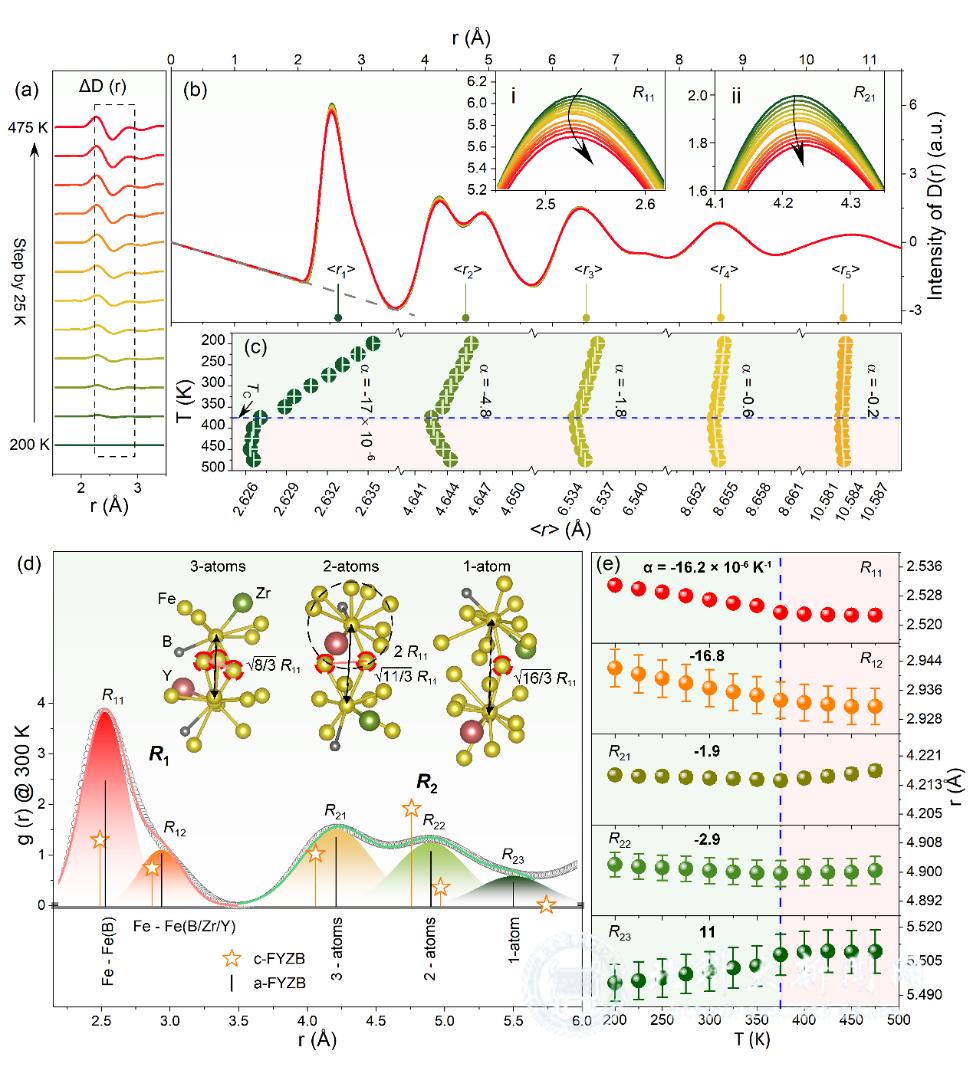USTB is committed to building itself into a high-level research-oriented university
which attaches importance to novel scientific research and promotes independent innovation.
Recently, the research team from the Institute of Solid State Chemistry at our university, in collaboration with international partners, published a major breakthrough in Physical Review Letters. Their work reports the discovery of negative thermal expansion (NTE) in an amorphous solid for the first time. The University of Science and Technology Beijing is the first affiliation and corresponding author unit for this publication.

Research Article
Emergent Negative Thermal Expansion in Amorphous Fe–Y–Zr–B Alloys
Physical Review Letters, Vol. 135, 106101 (2025)
Authors: Ming Gao, Hankun Xu, Kun Lin, Andrea Sanson, Alessandro Venier, Alessandro Purio, Jochi Tseng, Guodong Li, Qian Zhang, Xuyu Dong, Yili Cao, Qiang Li, Xinran Xing (corresponding author)
Research Significance
Negative thermal expansion (NTE) is a rare and highly valuable physical phenomenon in which materials shrink instead of expand when heated. This property can counteract the normal thermal expansion of components, preventing device deformation and failure. It has broad application potential in fields such as quantum technology, aerospace, and energy conversion.
Until now, NTE was mainly observed in crystalline materials with specific structural motifs. Due to the absence of long-range periodic order, amorphous solids were generally assumed to exhibit only positive thermal expansion.
In this study, the USTB team and collaborators observed unexpected NTE in amorphous Fe–Y–Zr–B (a-FYZB) alloys. Between 200–375 K, the a-FYZB alloy displayed an average linear thermal expansion coefficient of –6.7 ppm/K. Remarkably, even after more than 100 heating–cooling cycles below the crystallization temperature, the NTE behavior persisted. In contrast, the crystalline form (c-FYZB) exhibited normal positive thermal expansion (+11.7 ppm/K), highlighting the unique role of “short-range order without long-range periodicity” in amorphous NTE.

The structure and thermal expansion of amorphous Fe-Y-Zr-B (a-FYZB) alloys
Experimental Insights
Through synchrotron X-ray total scattering experiments, the team demonstrated that the observed NTE originates intrinsically from the amorphous structure itself, not from external interference. Using extended X-ray absorption fine structure (EXAFS) and pair distribution function (X-PDF) analyses, they discovered strong local Fe–Fe contractions and pronounced anomalies in local thermal vibrations.
Further combining magnetic and local structural analysis, the team proposed a new mechanism for NTE in amorphous alloys: “local structure–magnetic interaction–thermal vibration coupling.” This breakthrough reveals a completely new physical pathway for negative thermal expansion in disordered systems.

X-ray PDF study on local structure and negative thermal expansion mechanism
Research Impact
The paper, titled “Emergent Negative Thermal Expansion in Amorphous Fe–Y–Zr–B Alloys”, was recently published in Physical Review Letters. The first authors are chemistry master’s student Gao Ming and metallurgical engineering doctoral student Xu Hankun. The corresponding author is Professor Lin Guan of the Institute of Solid State Chemistry.
Collaborators include Professor Andrea Sanson from the University of Padova (Italy), researchers from the Japan Synchrotron Radiation Research Institute (JASRI/SPring-8), and the European Synchrotron Radiation Facility (ESRF).
The research was supported by the National Natural Science Foundation of China, the Ministry of Science and Technology, and the USTB Young Scholars Team Project, with technical support from Diamond Light Source (UK), SPring-8 (Japan), and ESRF (France).